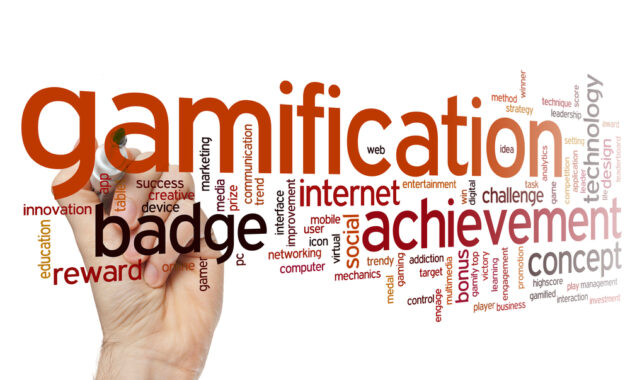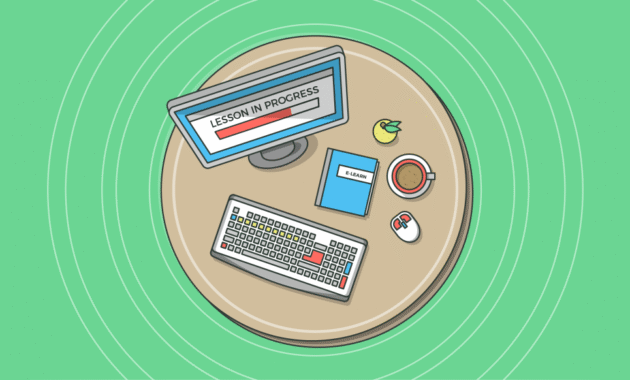How Teacher Feedback Is Enhanced by Mobile Apps sets the stage for a transformative exploration of educational technology’s role in shaping feedback mechanisms. In an era where mobile applications are increasingly integrated into the classroom, the potential for enhancing teacher feedback is profound. These apps not only streamline communication but also facilitate real-time interaction, thereby enriching the feedback experience for both educators and students.
The ability to provide instant feedback through mobile platforms allows teachers to address student needs promptly, fostering a more responsive learning environment. Moreover, the incorporation of multimedia elements in feedback can make the process more engaging, helping students to better understand their areas for improvement. As mobile technology continues to evolve, so too does its capacity to enhance educational practices, making it an essential area of study for educators seeking to improve their methodologies.
In the contemporary landscape of education, the integration of technology has revolutionized traditional teaching methodologies and learning experiences. The advent of digital technologies has not only enhanced classroom interactions but also transformed the educational paradigm, making learning more accessible, engaging, and efficient. This article delves into the multifaceted impacts of technology on modern education, examining both benefits and challenges, while considering future implications.
1. Enhanced Accessibility and Inclusion: How Teacher Feedback Is Enhanced By Mobile Apps
Technology serves as a powerful tool for enhancing educational accessibility. Online learning platforms, such as MOOCs (Massive Open Online Courses), provide educational opportunities to learners who may not have access to traditional brick-and-mortar institutions due to geographical, financial, or personal constraints. For instance, platforms like Coursera and edX offer courses from renowned universities, allowing students from diverse backgrounds to partake in high-quality education.
Additionally, assistive technologies, such as screen readers and speech-to-text software, cater to students with disabilities, facilitating their participation in inclusive learning environments. These advancements ensure that education is not merely a privilege for the few but a right accessible to all, fostering a more equitable society.
2. Engaging Learning Experiences
Technology has transformed the way educators engage students. Interactive tools, such as gamified learning platforms, virtual reality (VR), and augmented reality (AR), provide immersive experiences that make learning more enjoyable and effective. For example, VR allows students to explore historical sites or conduct scientific experiments in a virtual space, thereby enhancing their understanding of complex subjects.

Furthermore, the use of multimedia presentations, educational videos, and interactive simulations caters to various learning styles, ensuring that auditory, visual, and kinesthetic learners can grasp concepts more effectively. This diversification of teaching methods not only keeps students interested but also boosts retention and comprehension.
3. Personalized Learning
One of the most significant advancements brought forth by technology is the ability to personalize learning experiences. Adaptive learning technologies analyze students’ performance in real-time and provide tailored content that addresses their individual strengths and weaknesses. For instance, platforms like Khan Academy use algorithms to offer personalized exercises that adapt to a learner’s pace, ensuring they master each concept before moving on.
This individualized approach not only helps in addressing learning gaps but also empowers students to take ownership of their education. By allowing learners to progress at their own speed and choose topics of interest, technology fosters a sense of agency and motivation, ultimately leading to better educational outcomes.
4. Facilitating Collaboration and Communication
In today’s interconnected world, technology has broken down geographical barriers, facilitating collaboration among students and educators across the globe. Tools such as Google Classroom, Slack, and Microsoft Teams enable seamless communication and project collaboration, allowing learners to work together on assignments or engage in discussions regardless of their physical location.
Moreover, the incorporation of social media into education encourages peer-to-peer interaction and knowledge sharing. For instance, platforms like Edmodo allow teachers and students to create a community space where they can discuss ideas, share resources, and provide feedback. This collaborative learning environment cultivates critical thinking, problem-solving skills, and enhances the overall educational experience.
5. Data-Driven Decision Making
The integration of technology in education has led to an explosion of data regarding student performance and engagement. Learning management systems (LMS) and educational software collect vast amounts of data on student interactions, allowing educators to make informed decisions about teaching strategies and curriculum development. By analyzing trends in student performance, teachers can identify areas that require improvement and adjust their instruction accordingly.
Moreover, predictive analytics can help institutions to identify at-risk students and implement targeted interventions, thereby reducing dropout rates and fostering student success. This data-driven approach not only enhances educational quality but also contributes to institutional effectiveness.
6. Challenges and Considerations
Despite the myriad benefits that technology brings to education, it is essential to acknowledge the challenges accompanying its integration. One significant concern is the digital divide—the gap between those who have easy access to technology and those who do not. Socioeconomic disparities can lead to unequal educational opportunities, as students without reliable internet access or devices may struggle to keep pace with their peers.
Additionally, the reliance on technology raises concerns about data privacy and security. Educational institutions must ensure that they comply with regulations regarding student data protection and implement robust security measures to safeguard sensitive information.
Furthermore, educators may face difficulties in adapting to new technologies, necessitating ongoing professional development and support. Institutions must invest in training programs to equip teachers with the skills needed to effectively integrate technology into their teaching practices.
7. Future Implications of Technology in Education
As we look to the future, the role of technology in education is likely to expand even further. Emerging technologies such as artificial intelligence (AI) and machine learning hold the potential to further personalize educational experiences, automate administrative tasks, and provide real-time feedback to students. For instance, AI-driven tutoring systems can offer customized support, guiding learners through challenging topics with adaptive feedback.
Moreover, the rise of remote learning due to global events, such as the COVID-19 pandemic, has demonstrated the viability of online education. Hybrid models that blend in-person and online learning are becoming more popular, providing flexibility and accommodating diverse learning preferences.
Conclusion
In conclusion, technology has profoundly impacted modern education, enhancing accessibility, engagement, personalization, collaboration, and data-driven decision-making. While challenges persist, the potential for technology to improve educational outcomes is immense. As we advance, it is crucial to prioritize equitable access to technology, safeguard student data, and support educators in navigating this evolving landscape. By embracing these changes, we can create a more inclusive and effective educational environment for all.












